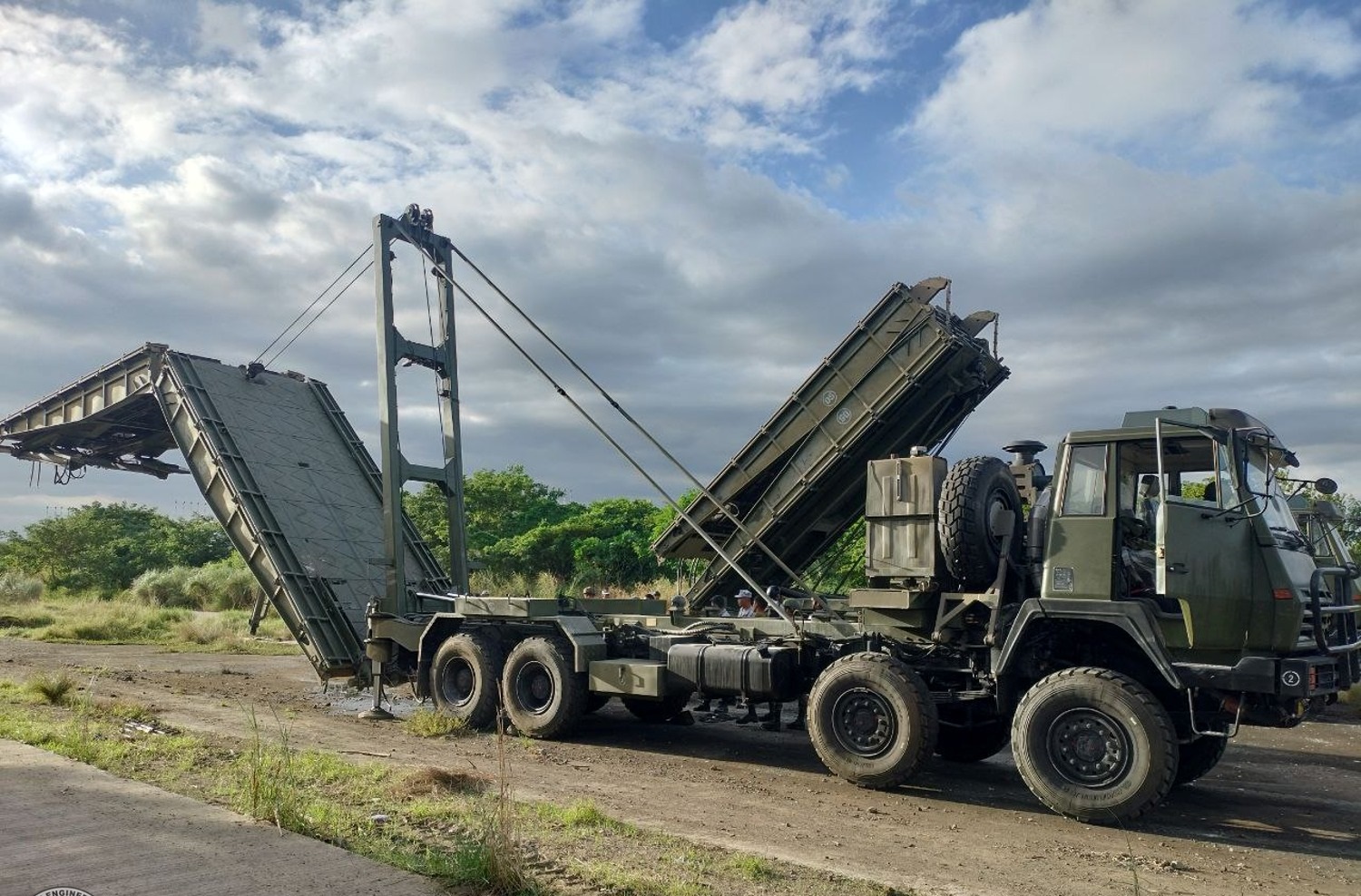The 525th Combat Engineer “Forerunner” Battalion of the Philippine Army’s Combat Engineer Regiment recently concluded an intensive Heavy Mechanized Bridge System (HMBS) training program for personnel from the Philippine Army and Navy. The program, held from December 16 to 21, 2024, took place at the Forerunner Training Area in Fort Bonifacio, Taguig City, under the leadership of Lt. Col. Michael Rey L. Bautista. A total of 21 participants, including members of the 33rd Combat Engineer Company from the 3rd Naval Combat Engineer Battalion, attended the training. The sessions were led by eight Subject Matter Experts (SMEs) from the 525th Combat Engineer Battalion, with 1st Lt. Nazar Louie O. Edma serving as the lead instructor.
The GQL-11 Heavy Mechanized Bridge System (HMBS) is a truck-mounted, 60-ton bridge system acquired from China, designed for critical operations requiring rapid and deliberate crossings over dry and wet gaps. It is a vital asset for combat engineering and disaster response missions, providing the capability to transport and deploy single bridge units efficiently. The training began with theoretical lessons on the operational capabilities and functions of the HMBS, followed by hands-on practical exercises. Two HMBS units were used during the training to ensure participants gained comprehensive experience in operating and maintaining the equipment. The GQL-111 is also in service with the Chinese army. This system can be used with pontoons to enable crossing wider rivers.

The training emphasized teamwork and technical proficiency, with participants from both the Philippine Army and Navy collaborating closely during practical drills. The exercises included deploying and retrieving the HMBS in simulated operational environments, culminating in a successful demonstration of bridging operations. The participants’ performance highlighted their readiness and capability to utilize the HMBS effectively. Their newly acquired expertise will significantly enhance the operational readiness of the Philippine military, particularly in addressing challenges related to mobility and disaster response. The completion of this training marks another step forward in the Philippine Army and Navy’s efforts to modernize their engineering capabilities and strengthen interoperability between the two branches.
The GQL-111 is a scissor-type bridge system, transported and deployed from an 8×8 all-terrain truck chassis. It is conceptually similar to the Russian TMM-6 heavy bridge-building system. The GQL-111 can span gaps up to 15 meters with a single section and up to 75 meters with a complete set of five sections, making it a versatile solution for bridging both dry and wet gaps. Each scissor bridge also includes an adjustable leg that can extend up to 5.5 meters below, enhancing its stability and functionality in various settings. The GQL-111 can support armored combat vehicles weighing up to 50 tons and wheeled vehicles with a maximum axle load of 13 tons. The GQL-111 is also in service with the Chinese army. This system can be used with pontoons to enable crossing wider rivers.













